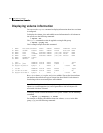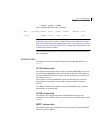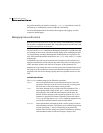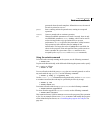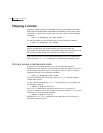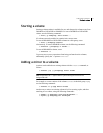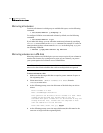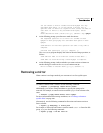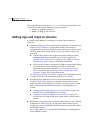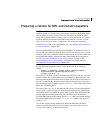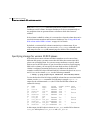
270 Administering volumes
Stopping a volume
Stopping a volume
Stopping a volume renders it unavailable to the user, and changes the volume
kernel state from ENABLED or DETACHED to DISABLED. If the volume cannot
be disabled, it remains in its current state. To stop a volume, use the following
command:
# vxvol [-g diskgroup] [-f] stop volume ...
To stop all volumes in a specified disk group, use the following command:
# vxvol [-g diskgroup] [-f] stopall
Caution: If you use the -f option to forcibly disable a volume that is currently
open to an application, the volume remains open, but its contents are
inaccessible. I/O operations on the volume fail, and this may cause data loss. It is
not possible to deport a disk group until all of its volumes are closed.
If you need to prevent a closed volume from being opened, it is recommended
that you use the vxvol maint command, as described in the following section.
Putting a volume in maintenance mode
If all mirrors of a volume become STALE, you can place the volume in
maintenance mode. Then you can view the plexes while the volume is DETACHED
and determine which plex to use for reviving the others. To place a volume in
maintenance mode, use the following command:
# vxvol [-g diskgroup] maint volume
To assist in choosing the revival source plex, use vxprint to list the stopped
volume and its plexes.
To take a plex (in this example, vol01-02 in the disk group, mydg) offline, use
the following command:
# vxmend -g mydg off vol01-02
The vxmend on command can change the state of an OFFLINE plex of a
DISABLED volume to STALE. For example, to put a plex named vol01-02 in the
STALE state, use the following command:
# vxmend -g mydg on vol01-02
Running the vxvol start command on the volume then revives the plex as
described in the next section.





